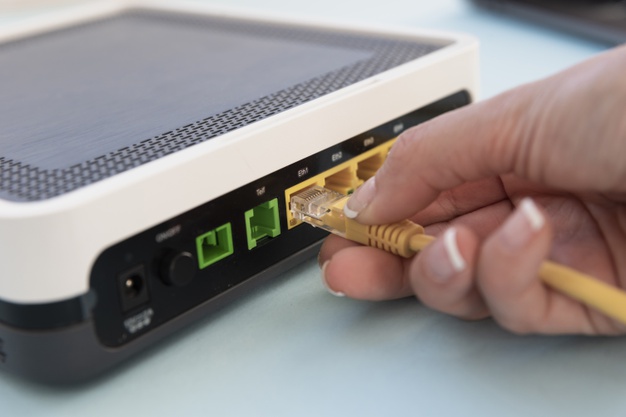The term “networking” can be as varied as the number of people describing it. Networking is the well- defined method of fixtures combined to expedite support co-operative and interaction privately or globally, as systems have multiple components and various mechanisms wherein data can be channelized.
Realistically, it’s not possible to explore each application separately. Furthermore, there are groups out on just the simulator side, also. Using these apps will help you work better in your Networking Team and help you communicate issues and replicate them as well when they arise!
Objectively, each part of the applications has its individual collection of benefits and drawbacks for Learning Cisco commands and tutorials.
That’s precisely what we’re going to study, the in’s and outs of all the top networking software and Cisco based training programs out there!
Here’s the 5 Best software to Learn Cisco & emulators:
1. Boson NetSim
What is Boson NetSim?
Boson is an IT training industry renowned for its high-quality Cisco certification exam coursework and challenging training tests.
The added key commodity of Boson’s is NetSim, a software that resembles Cisco network routers and switches.
Positives:
Custom Lab Distribution
Realistic Terminal Features
Less clicking than Packet Tracer
Lab Quality
Device Customization
Licensing Maps to Exams
Lab Accessibility
Negatives:
Cannot Modify Active Topology
No Simulation Mode
Lack of Topology Information
Lack of Topology Customization
No Cross-Platform Compatibility
2. GNS3
What is GNS3?
Graphical Network Simulator-3 (usually abbreviated to GNS3) is an available, open-source client/server interface for network emulation and virtualization. It is a Python-based platform that primarily utilizes software called Dynamips to emulate Cisco software and hardware. GNS3 supports the Cisco 1700, 2600, 2691, 3600, 3725, 3745, and 7200 router platforms.
In modern times, GNS3 has developed to maintain a more comprehensive range of virtual system devices from a mixture of companies by the application of “appliances”, which are easy-to-import templates of standard virtual network machines. Established vendors for these devices include Aruba, Palo Alto, F5, Juniper, Cumulus, and much more.
Positives:
Simple, Easy-to-Read Documentation
Modifiable Active Topology
GNS3 is a Free Network Emulator
Community Labs
Multiple Connection Types
Negatives
Software Image Access. GNS3 does not arrive prepackaged with some virtual network machines. Consequently, to imitate any Cisco routers or switches, you need first have a present Cisco IOS software image that is harmonious with GNS3.
Simply put, the single consistent approach to achieve these Cisco IOS software images is to produce a real provider agreement with Cisco that grants access to certain images — or be a follower.
Because GNS3 is a client/server software, it’s recommended an installation that you deploy the GNS3 VM (Virtual Machine) to assist as the server.
You can extend the virtual device on a local processor utilizing a non-free VMware Workstation, or the free VMware Player, or even a dedicated server through VMware ESXi. You can then connect the GNS3 client application on a LAN machine and attach it to the GNS3 VM server.
Once established, you can generate system topologies through the client, which are performed on the server.
3. Cisco Packet Tracer
Packet Tracer is Cisco’s powerful visual simulation engine that imitates network topologies composed of Cisco switches, firewalls, routers, and more.
Packet Tracer was basically intended as instructional support for Cisco’s Networking Academy (famously recognized as NetAcad) but is an outstanding simulator for whoever seeking an entry-level Cisco certification; CCNA R&S or CCENT, for instance.

Positives:
Making the Lab Realistic
Simulation Mode
Cost
Cross-Platform Compatibility
Realistic Terminal
Custom Exercise Creation
Device Variety
Connection Variety
Negatives:
Custom Exercise Distribution
Bugs
No Built-In Labs
Extra Note:
Packet Tracer’s simulation of Cisco’s IOS software displays the most like reaction to genuine network devices, and its built-in terminal client is very comparable to the actual thing. Cisco’s Packet Tracer continues to be the gold model in virtual network simulators.
4. EVE-NG
What is EVE-NG?
EVE-NG (Emulated Virtual Environment Next Generation) is a multi-vendor virtual system simulator that, comparable to VIRL Personal Edition, was produced for private individuals and more modest companies.
Positives:
Cost
Modifiable Active Topology
Clientless
Multiple Connection Types
Negatives:
Documentation
Software Image Access

5. VIRL
What is VIRL?
VIRL (Virtual Internet Routing Lab) is Cisco’s proprietary virtual network emulator placed towards instructional organizations and private people.
It is very related to Cisco Modeling Labs (famously recognized as CML), which is a highly-scalable modification of VIRL devised for medium and big companies to mirror and imitate enterprise networks.
VIRL functions in a client/server model alike to GNS3. You establish the VIRL server either as a virtual machine under VMware’s ESXi on a bare-metal server, then create network topologies and communicate with the server applying a client application called VM Maestro.
Positives:
Network Topology Portability
Software Image Access
Advanced Automation Capabilities
Negatives:
Resource Requirements
No Serial Interfaces
Cost
Cannot Modify Active Topology

